|
|
||||||||||||||||||||||||||
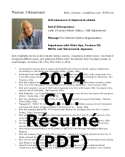 |
||||||||||||||||||||||||||
|
|
|
“Without me, you would not be watching YouTube today.” “Defence against Distributed Denial-of-Service Attacks exists.” Bold Statements? Not really ... but it got your attention. While I am a very down-to-earth and grounded individual, the statements, however, hold true - what kind of relevance they hold (if any), however, is everyone’s own judgment. |
|
|
|
|
|
|
|
“Without me, you would not be watching YouTube today.” |
|
(1995 - 1998) |
|
Shockwave ---> Flash ---> YouTube: Back at Macromedia, a lot of resources went into the software development for “ShockWave” in 1995: the first animation on the fairly new consumer Internet. However, nobody at Macromedia really thought about how the consumer would get this necessary plug-in, which at the time would not be included in the Netscape or Internet Explorer web browsers - yet. Anticipation for the demand of this 3.5 Megabyte plug-in was high, yet exact numbers for demand were everybody’s best guess. As soon as I became aware of the project (less then 3 months before the launch date - the IT guys running the show often find out last), I realized that none of the existing resources would be sufficient to distribute the plug-in. Keep in mind, in those days there were no Internet data centers. So within 2 days, I developed a plan, and presented an initial $689,000 Purchase Order to the CFO (Rick Wood; he passed away since) and CEO (Bud Colligan) of Macromedia, which was approved within a day. Subsequently (and besides my other responsibilities to restructure, build, and manage Macromedia’s global infrastructure), I doubled the server room in size, set up a download infrastructure (machines, personnel, the whole thing), convinced MFS Fiber to install a scalable switch in the building (their cost: $1 million), installed a dual-redundant SONET fiber connection from MFS’s last distribution point into the building (meant ripping up Townsend Street for 4 blocks), and set up provider agreements for 1 live DS-3 (45 Mbit/s) and several additional stand-by DS-3’s on the Bay Area Fiber ring. This allowed for turn-up / “fast-scaling” of additional, multiple DS-3 pipes within days (instead of months), should the demand exceed forecasts - see all the pictures ... Subsequently, the launch of “ShockWave” was very successful for the company, and enabled Macromedia to expand on this platform. The ShockWave plug-in player was large, and application loading-time-to-play was quite noticeable. The next logical step was to offer a lean, and thus quick, player, and so the company acquired “Flash”, a small 8-person company in San Diego. Based on the ShockWave success, Macromedia had the wherewithal to build a large implementation base for Flash, which is today a term most Internet users know, and which is widely deployed (including YouTube; all of their video content is based on the Flash player - which brings me back to the headline statement). Without my initiative to get the ShockWave plug-in distributed, it would likely not have been as successful, Macromedia would have likely not invested in Flash, and consequently a platform such a YouTube, Xtube, MySpace Video, and similar large video content providers would have never come into existence in their current form. |
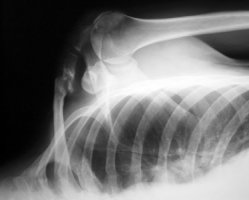 |
||||||||||||||||||||||||||||||
|
(1989 - 1990) |
||||||||||||||||||||||||||||||
|
A First: Medical Radiology Pictures (X-Ray) computerized without Loss Back in 1988/1989 I worked with Joachim Otto (whose idea it was, and who did all the programming) to digitalize medical records, particularly X-Rays, for more options to store them, and - more importantly - to provide quick access to them when stored in archives, or to share with consulting doctors. We were the first ones to develop a solution to digitize the Xrays WITHOUT information loss, using two Kontron (BMW) cameras, and overlaying their images. The complete solution, along with a borrowed $250,000 Kodak laser printer for re-production on-site, was presented by us in a “pre-alpha” status at the largest medical trade show, “MEDICA”, in Duesseldorf, Germany, in 1990. We believe this was the 1st time X-Ray images were ever digitized and reproduced without any information loss. The successful project was financed by a small medical archiving company (DMI), which shortly afterwards went bankrupt. Mr. Otto still works in the medical data arena. |
||||||||||||||||||||||||||||||
 |
 |
|||||||||||||||||||||||||||||
|
(1995 - 1996) |
||||||||||||||||||||||||||||||
|
A First: Internet Content Mirrors - PoP (Point of Presence) Servers: While I was certainly not the first one to think about it, necessity drove me to mirror content early. For Macromedia, at the time one of the Top 5 Web sites on the Internet, I deployed mirror servers in Japan, London, and Stockholm to mirror content in the United States (mostly ShockWave plug-ins) to distribute download traffic for a worldwide user base. To my best knowledge, these were the first mirror site commercially deployed on the Internet at the time (1995). I was the first one to make the step others were thinking about, and able to build the business case to get the money for it. |
||||||||||||||||||||||||||||||
 |
||||||||||||||||||||||||||||||
|
(1999) |
||||||||||||||||||||||||||||||
|
Data and Voice / VoIP Convergence Early on, I recognized voice traffic is not much different from data traffic. Long before you could buy consumer VoIP solutions over broadband connections like today, telephone and data services were strictly separated, typically in different locations - even where there were crossovers, such as IVR (Interactive Voice Response) systems. In 1999, at BarterTrust, I installed new Nortel PBX switches and corresponding IVR units in the data center, and not at the office locations - and set up simple end-point PBX switches in the various office locations connecting to it. This allowed for a central management with all critical components for voice and data in one secure and redundant location with access to all circuitry that could be possibly needed. At the time, I believe that was the first time PBX switches were installed in the “Internet Data Centers” just being built everywhere, and it raised eyebrows; today, voice and data services are tightly integrated, and everybody does it... Previously, I had built that very same, second-generation “Super-POP” data center for Globix with the thought in mind that voice services could as well be provided from it, as the data services it was designed for originally, to meet all necessary federal (FCC) regulation requirements for telecom services. |
||||||||||||||||||||||||||||||
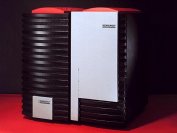 |
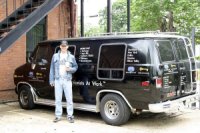 |
 |
||||||||||||||||||||||||||||
|
(2001 - 2002) |
||||||||||||||||||||||||||||||
|
Emerging Technologies in the current century: WiFi - mobile data networks:
When mobile communication technologies emerged for the masses (WiFi), offering better throughput and easy-of-use, and started replacing slow packet-based services offered by Ricochet (used it since 1995 to their demise), Motorola (used one of their touch-pad devices) and cellular-based analog modems, I believed that:
|
||||||||||||||||||||||||||||||
 |
||||||||||||||||||||||||||||||
 |
||||||||||||||||||||||||||||||
|
A working Defence Against Distributed Denial-of-Service Attacks exists. |
||||||||||||||||||||||||||||||
|
(2002 - 2005) |
||||||||||||||||||||||||||||||
|
Infrastructure Volatility - CyberWarfare (Defense) 2002 - 2005 The large-scale attack on the Internet DNS root servers on October 21st and 22nd, 2002 (a fairly simple ICMP attack byt the way) almost shut down the entire Internet. Few people even know about it, at the time or today, and it showed how vulnerable and volatile the Internet actually is. In 2002, the Internet had already become a part of everyone’s life, and become a substantial business tool across all industries in am aggressive globalizing world. Today, this statement holds even more true, and going forward, it is safe to say, the Internet will increase to be a substantial, and critical, part of business as well as personal uses. So, when the Internet got as close as 1 hour to a total DNS shut-down in October 2002, I wondered what could be done to defend against such threats, and - better - to prevent them to begin with. Subsequently, I changed the company (Melior, Inc.) to cease all other operations, and focus entirely on developing a solution to a) defend against distributed Denial-of-Service (dDoS) attacks, and b) prevent the preliminary penetration tests. The scope was later expanded to address threats through E-Mail (Spam, Virii, Phishing), and on the long run, to eliminate “zero-day” virus threats (no such thing exists today; all virus scanners operate on a “known” form of virus database, and thus only protect users in a very limited fashion, and not against the most costly attacks on first launch. While the company was able to develop a working solution, against the odds of inventing a technology perceived as impossible, doing this with very insufficient funding, and able to demonstrate the dDoS Defense capability for 300 million users saved from dDoS attacks on the anti-Spam databases (read the whole story on the company web site), the lack of capital prevented the necessary marketing to become financially successful. Entire online industries (betting, gaming, adult) have been victimized already by dDoS extortion; CyberWarfare, often, if not mostly, using dDoS methods, has become an effective component in conflicts between political groups and nations, as well as against specific companies (such as Microsoft, shut down 3 times so far with wide-spread publicity, forcing the company - embarrassingly - to run their online presence on Linux-based Akamai as a result). I expect that one day, when yet another large dDoS attack impacting a wider online community occurs, people might be getting back to the solutions developed by Melior, Inc. |
||||||||||||||||||||||||||||||
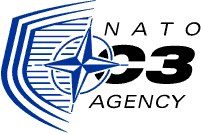 |
||||||||||||||||||||||||||||||
|
(2008) |
||||||||||||||||||||||||||||||
|
In Fall 2008 I was invited by NATO HeadQuarters to come to Brussels, Belgium, to Interview for an A5 position in NATO’s C3 Chief Strategy Management. |
||||||||||||||||||||||||||||||
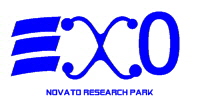 |
||||||||||||||||||||||||||||||
|
(2008 - present) |
||||||||||||||||||||||||||||||
|
Since, I started working on the development of a new technology concept as a base for Web 4.0, beyond binary computing, for the future blend of perceived reality and its leased (temporary/in-flux) cyber representation. |
||||||||||||||||||||||||||||||
 |
||||||||||||||||||||||||||||||
|
Why am I writing this up? Certainly not to boast. My intentions are more to show that I have the foresight to look at the “Big Picture” first, and not to get lost in the details. Every successful project, business, or other endeavor relies on a plan / design / idea incorporating all components, and not on the independent development and implementation of a solution incapable of interacting with other components / business units in the end. In the past, I have shown a track record of recognizing the whole situation quickly, taking the initiative, developing a durable, scalable, and realistic solution, and implementing it on time - and on budget. My INFP Personality Type compliments this approach (occurs only in ~ 1% of the population - sic! :-). And while my resume / Curriculum Vitae (CV) is obviously somewhat unusual, it requires some explanation to keep finding new challenges (or simply put: I should have a decently paid, stable job like everyone else, preferably one “with a cause”). ...and: Besides all the “techie” stuff above, I have some other “talents” as well, which have nothing to do with technology. |
||||||||||||||||||||||||||||||
|
© Copyright 1987/1994 - 2014 Thomas J. Ackermann “Perfectionists At Work.” is a Registered Trademark - USPTO No 2,947,825 Compiled at: RLC Centre Ops Ordi & Logiciel II, Genève, CH |
